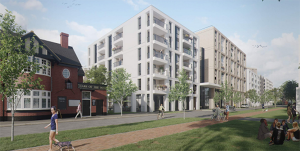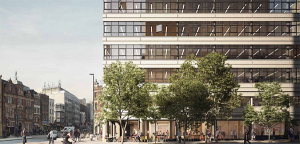The Glenigan Construction Industry Forecast for 2020 and 2021 has predicted a series of bright spots across the construction industry
Assuming a Conservative government is elected this month, Brexit is agreed, and an EU trade agreement is put in place, Glenigan forecasts that after a 1% rise in 2019, the value of underlying project starts will rise by 2% in 2020 and by a further 5% in 2021.
The main bright spots include private and affordable housing, education, health and civil engineering work.
Post-Brexit nerves may cause a decline in construction activity next year before stabilising in 2021. But the outlook for new construction of warehousing/logistics and London office space remains promising and the hotel and leisure sector is set to stay on a growth path, according to the forecast.
Buyer confidence bounces back
Assisted by a rebound in buyer confidence, the value of private housing is expected to rise by 9% next year to £19,385m and increase by a further 10% in 2021.
A recent HBF/Glenigan Housing Pipeline report revealed nearly 380,000 outline planning permissions were granted in the first half of 2019.
The West Midlands is expected to provide a hotspot for private housebuilding, particularly in Birmingham for the 2022 Commonwealth Games. A contract has recently been confirmed in the city for a £42m scheme of 208 flats at Parry Barr for Birmingham City Council where Kier Construction is the main contractor.

After weakening this year, build-to-rent activity is forecast to resume growing over the next two years. In Brighton for example, work is set to start next spring on Legal & General’s £80m New England Quarter build-to-rent scheme involving 208 flats.
After an estimated 25% rise in the value of affordable housing this year, Glenigan expects further growth in the sector in the next two years. Although a subdued outlook for student accommodation means the overall value of social housing will dip next year it is set to rebound strongly, rising by 9% in 2021.
The need to build new schools to match rising pupil numbers should bolster construction in the education sector, particularly in London and the major cities. Glenigan forecasts school building starts will rise 8% next year and by a further 7% in 2021.
Health-related construction is also set to benefit from a boost in NHS capital budgets over the next two years, particularly at NHS England where capital funding has risen by 14% to £6.7bn for 2019/20.
Government spending to bolster
Civil engineering construction is set to benefit from more government spending – particularly by Highways England and Network Rail. Having risen by 22% this year, the Glenigan Construction Industry Forecast is predicting the value of starts for civil engineering projects will rise by 5% next year.
Meanwhile, large projects such as Thames Tideway, Hinkley Point and HS2 should sustain construction activity in the civils sector.
Logistics space demand on the rise
Demand for new logistics space to meet demand from online retailers should sustain new construction of warehousing and distribution space, particularly in the Midlands, North West and parts of the South East. Glenigan estimates that the value of logistics construction rose by 2% this year to £1.86bn and forecasts it will stay close to this for the next two years.
One significant project in the sector is the former Peugeot factory at Prologis Logistics Park near Coventry. Work is set to start in the New Year on the £49.5m development.
Commercial construction bright spot
London looks set to be a bright spot in the commercial office sector. The value of new office project starts in the capital has risen by 16% so far this year, which will continue to rise next year.
Construction started last month on the £70m Whitechapel High Street refurbishment and extension at Central House where and work is set to continue for two years.

Expansion plans by major hotel chains should help sustain construction activity in the hotel and leisure sector. A high level of detailed planning approvals, particularly in London, has created a healthy pipeline in the sector which should mean more construction activity in 2021, particularly if Brexit is resolved. Glenigan Construction is forecasting a 1% rise in the value of starts in the sector next year and a 5% increase in 2021.
What could we expect from a Labour government?
Other political scenarios will mean different outcomes for the construction industry. If Labour succeeds, Glenigan predicts private investment is likely to be subdued as the government seeks a new EU withdrawal agreement.
But Labour’s proposed £250bn National Transformation Fund, its support for HS2 and its ambitious programmes for household energy efficiency would generate more government-funded construction.














